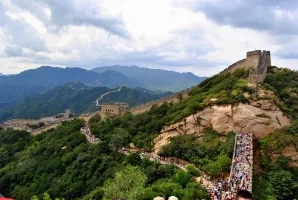What’s the Coffee Scene Like in China? – Part 2
This is Part 2 of a three-part article on coffee in China. You can read part one here.
Throughout history China and tea have been synonymous. But there’s a new kid on the block: our favorite peppy bean, coffee, is now taking China by storm. Indeed, coffee production is a relatively new idea there, but modern life has increased its popularity. According to the U.S. Department of Agriculture report, “Coffee: World Markets and Trade,” in 2016 and 2017, China was among the top 20 worldwide producers.
Chinese coffee production cozies up to rapid growth
Wikipedia offers us a brief history, summarized here. A French missionary introduced coffee to Yunnan province—in the far southwest section of China—during the late 19th century. But modern Chinese coffee cultivation began in 1988 when the Chinese government, World Bank, and the United Nations Development Programme jointly started a program to introduce coffee growing in the region. Nestle arrived early in Yunnan to encourage this cultivation of coffee. Hogood Coffee, China’s largest domestic instant coffee maker, was founded in 2007 and has grown much of the coffee in the Dehong prefecture. Hogood takes advantage of relaxed land-use policies in Yunnan and uses contract farming schemes to control supply. They plant seedlings to develop mature trees from which farmers harvest beans and sell them to Hogood.
Almost all domestic coffee comes from Yunnan, accounting for 98% of production. Provinces such as Fujian and Hainan grow lower-grade robusta beans, much like Vietnam and other Asian nations. Yunnan grows the more prized arabica beans and exports about half of them, so they have plenty of capacity to shift sales into domestic consumption as the specialty-coffee market grows.
Average coffee consumption is still low but growing fast
At just four cups per person per year, the average consumption of coffee in China is still very low compared to the U.S. and Europe, but it has risen in parallel with increased coffee production. This sharp increase in production makes it a huge market: from 2006 to 2017, Chinese consumption had grown by an annual average of 22%. Starbucks recently revealed plans to build nearly 3,000 new stores in China over the next five years, which almost doubles the number of stores there now. Costa Coffee promises to expand from 344 shops to 900 by 2020. And radical Luckin Coffee, founded in 2017 with internet-based payment and home delivery, already has 500+ stores and is expanding rapidly. We’ll talk more about these retail chains in Coffee Scene in China—Part 3.
Young people drink trendy western beverages to show affluence and taste
What’s leading the coffee charge in China? Millennials, of course.
"You have a very young population that has been exposed to Western influences," Dave Seminsky said for CBS News. Dave first came to China to work for Apple but saw a coffee craze brewing. So, now he owns Sumerian Coffee in Shanghai. His shops are leading the way in the independent coffee shop market, and they have vowed to “stay true to coffee” and not offer many of the “frills” chains like Starbucks boast.
"It's perceived as having a level of status when you're adopting Western products. So that's why companies like Chanel, Hermes, and Starbucks do well here," Seminsky adds.
Coffee shops are where young Chinese roll up their sleeves and relax
As a trendy western beverage, coffee in your cup caps a certain level of affluence and taste in China, with a rapidly expanding middle class. According to Bloomberg News, Chinese 20- and 30-somethings also say coffee shops are great places to hang out with friends and are more comfortable than tea houses.
"To be seen in a coffee shop with which you identify yourself, this is a way for them to express themselves and to say who they are . . . the products they consume, the food they buy, the coffee they drink," Esteban Liang, managing director of Costa Coffee in Asia, said.
Nestle and instant coffee dominate for now, but specialty brewed coffee has cozy future
Despite the plans of Starbucks, Costa Coffee, and domestic Luckin Coffee for rapid growth, Nestle dominates the current coffee market in China by selling mostly instant coffee drinks, which account for 90% of retail sales. But this reliance on instant products is expected to change as consumers’ taste buds become more sophisticated, and they start seeking out more expensive and refined coffees.
It will be exciting to follow this growing trend in China. Can supply keep up with demand? Only time will tell.
Have any news about China’s coffee scene? Drop it in the comments below!

